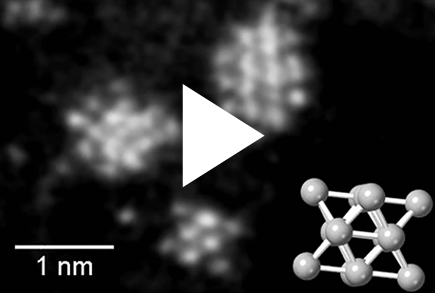Portrait Rolf Erni
An eye for the smallest things
As head of Empa's Electron Microscopy Center, Rolf Erni has to balance many tasks: negotiating industrial contracts, promoting young scientists, teaching, supporting researchers at other Empa labs. And fascinating fundamental research, for which he is now being honored as one of the very few Distinguished Senior Researchers at Empa.
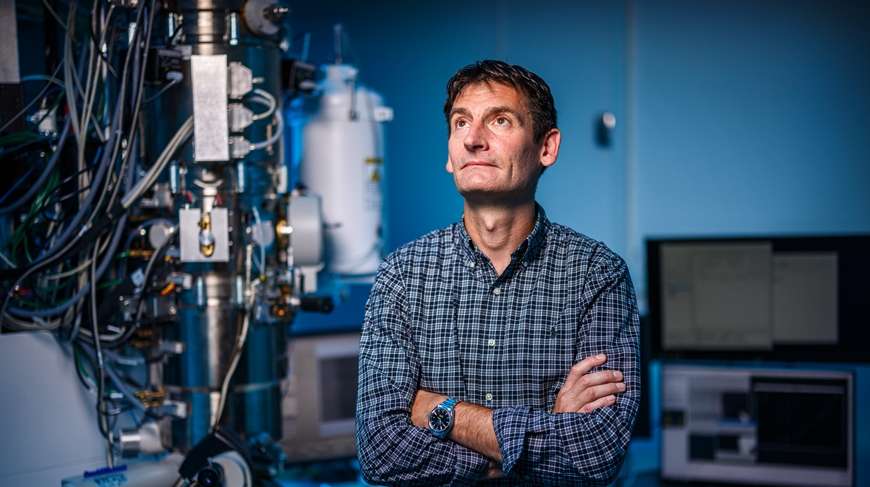
If you google what Rolf Erni actually does, you have to be prepared for polysyllabic words. "We employ atomic-resolution imaging, mostly in STEM mode, combined with local electron energy-loss spectroscopy (EELS), energy-dispersive X-ray (EDX) spectroscopy, as well as off-axis electron holography" – food for thought from the Electron Microscopy Center's website, at which even trained researchers are likely to frown.
"This is not rocket science," Rolf Erni likes to say then, as he did recently at a talk about his work – a reassuring understatement that probably stems from his research stint in the US. In other words, this is not highly sophisticated research for a select few, nor is it an impossibility for the normally gifted. Instead, it is the everyday work of "microscopists," as Erni calls the guild, to which he has belonged for about 20 years – with curiosity, diligence, and highly cited publications in journals and books. In short: with a lot of success.
Quite unplanned, is how Erni describes his career. After receiving his PhD in materials science from ETH Zurich, Erni initially wanted to go straight into industry – but then "drifted off," as he says. First, he spent a postdoc year at the National Center for Electron Microscopy in California; then, in 2004, he joined FEI, a leading manufacturer of electron microscopes. His job was to assist in the development of a new type of instrument, including its introduction to the market.
This microscope was to be "super-stable" and – just like optical devices – reduce even minimal "shakes" to enable a higher resolution. This also required solutions for inconspicuous details. For instance, the ring-shaped electromagnetic lenses that focus the electron beam – corresponding to the light beam of an optical microscope – contain a copper wire that heats up under continuous current. "These have to be cooled with water," Erni explains, "and just the vibrations caused by water running through the instrument could have been critical for the instrument's stability."
Rolf Erni
Career
After graduation, postdoc at the National Center for Electron Microscopy, California, then as an expert at the manufacturer FEI in Eindhoven. As researcher at the University of Antwerp and again in California. Since 2009, head of the Center for Electron Microscopy at Empa.
Science
Training in materials science at ETH Zurich, diverse research in electron microscopy, publication of technical papers and books, lectureships at ETH Zurich, member of technical committees.
Success? Staying on the ball
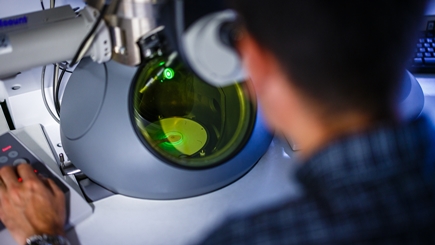
So he got to know his tool over the years – inside and out – and experienced the rapid development over two decades as an insider: from aberration corrections that eliminated "blurring" caused by excessively deflected electrons to the first CCD cameras in the 1990s. As in photography, they replaced films that had recorded electrons after they had penetrated the ultra-thin sample. And from advancing to atomic resolution of less than a tenth of a nanometer to new detectors that directly capture single electrons.
"There's always something new", says Rolf Erni, "so it's really true that if you don't keep up, you rust." And these small and big steps paved the way for today's projects like "Cluster", supported by the EU's Horizon2020 framework program – with a fascinating question: How is solid matter formed? Or more precisely, how do the first "nuclei" of solids like crystals form?
A blind spot in research – and a perfect opportunity for the Empa team. "If you understood these processes, you might be able to control them," the researcher says, enthused. "And then it might also be possible to grow materials with favorable properties in a targeted manner. Or even those that don't occur in nature at all." There is still a long way to go, of course, he adds. And it leads over ... – fundamental research.
One who explains well
The team took its first steps in the lab with platinum atoms, because heavy metals appear more high-contrast in the electron microscope, i.e., they are easy to "see". How would Erni explain this to his eight-year-old son, who has already visited the lab with his class? "We put platinum atoms on a bed of carbon, and then we observe: What happens to them when you heat them up or bombard them with electrons?"
He does so by means of STEM (scanning transmission electron microscopy), that is, by scanning the beam over the platinum samples – at up to 150 frames per second, so that every molecular movement is captured and no phase is missed. "It's actually not that complicated; it's just no one has done it before," says Erni. "And no one has dared to do this superfast scanning."
The team has assembled their individual recordings into short video sequences. They show how different platinum structures form: ordered clusters of between six and 25 atoms – often including a very densely packed structure that platinum also adopts in its solid state. In the next step, the experts tried it in a more complex environment of a liquid, where similar phenomena could be observed: Atoms formed in what the experts call a "quasi-molten, crystalline state."
How would Rolf Erni explain this observation to his son? That matter in this state "wobbles" in different forms? "Yes, exactly," he nods – and quickly comes up with a more precise image. "Or like deforming a bunch of magnetic beads in your hand. And in the process, highly orderly structures emerge from time to time."
Electron microscopy at Empa
Four devices are currently in use at Empa. Firstly, there are two scanning electron microscopes, which scan the object under investigation with an electron beam; the interaction of the electrons with the sample is processed into an image. These instruments are primarily used for the analysis of materials. The two transmission electron microscopes work on a different basic principle: The electrons penetrate the wafer-thin samples, as if one were shining through a foil, and produce an image underneath – depending on the method, up to atomic resolution. These devices are used primarily in research. In addition to the EU-funded Cluster project on the formation and growth of crystals, which is significant for catalysts, for example, the Empa team is also working on complex oxides, which play an important role in technologies such as novel electronic components and data storage media.
Diversity as a researcher's virtue
Pondering over such fundamentals, signing industrial contracts, training dozens of Empa researchers from other labs so they can use the electron microscopes for their own research: Being a researcher and a service provider at the same time – isn't that too much of a good thing? No, says Erni; on the contrary, he considers diverse insights highly valuable for his team, which he started building up in 2009 – at the time a key incentive to join Empa.
The center started with 2.5 full-time positions, today it has around ten. Whether for high-performance batteries, novel alloys or CO2-neutral cements of the future, the need for microscopists' expertise will continue to grow – and in discussions among experts about future service centers, Rolf Erni also advocates independent research. Of course, it's important to host and equip these centers so that people can have their measurements taken, he says – but it's equally important to be able to try out something new, he says, "and to have the freedom not to have to charge for every hour the microscope is running."
In electron microscopy, the tool itself, with all its opportunities and pitfalls, is also a research object. Tinkering with new procedures is an inseparable part of it – and talented young scientists with creativity and the perfectionism it takes to succeed are as valuable as in any other scientific field. "In the end, you have extremely well-educated folks in your team – and all they do is service?" says Rolf Erni. "That can't be it."
|
Further information Prof. Dr. Rolf Erni |
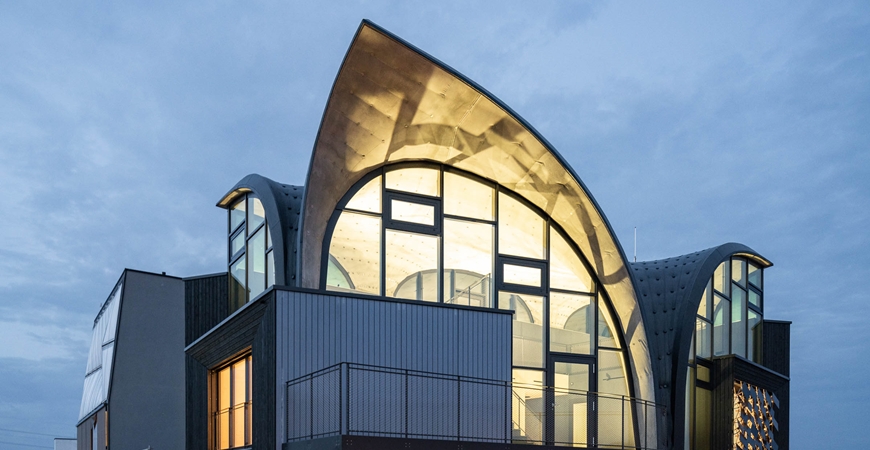
The NEST HiLo unit
Concrete construction - the lightweight way
>>>>
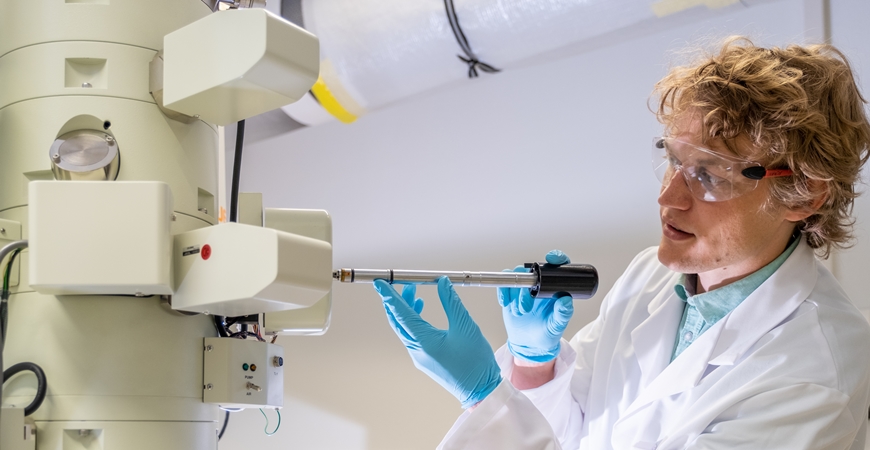
Nanomedicine
Gentler tumor treatment
>>>>
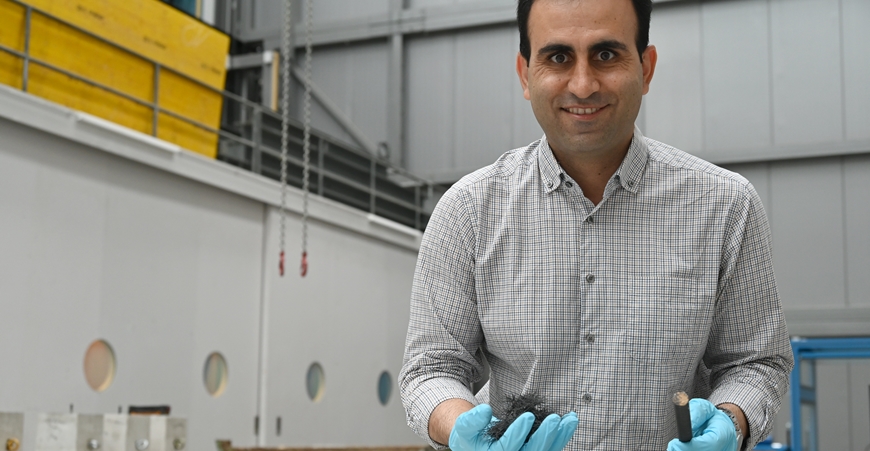
Empa Zukunftsfonds
Materials to protect the climate
The latest example is a research project on prestressed high-performance concrete, which can now be started thanks to funding from the Ernst Göhner Foundation.
>>>>

